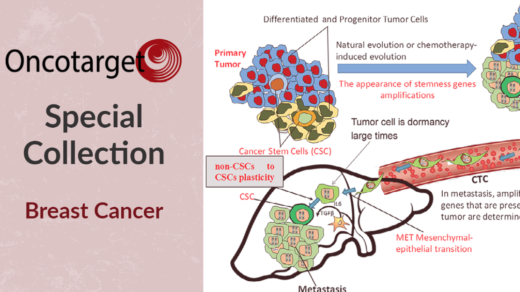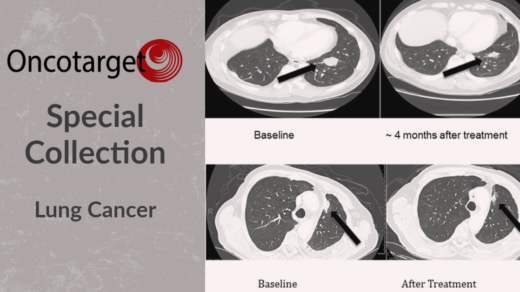In a new editorial, researchers from the University of Illinois at Urbana-Champaign discuss the value of using computational models to predict the functions of cancer-associated genetic variants.
—
How can we understand the role of genetic variations in cancer development and treatment? This is one of the most challenging and important questions in modern biology and medicine. A new editorial paper, by researchers Jun S. Song and Mohith Manjunath from the University of Illinois at Urbana-Champaign, offers a novel discussion involving computational methods to address this question. On August 30, 2023, their editorial was published in Oncotarget, entitled, “Predicting the molecular functions of regulatory genetic variants associated with cancer.”
“To date, over 490,000 genotype-phenotype associations have been discovered through large-scale genome-wide association studies (GWAS) [1]; however, molecular functions of most of these discovered GWAS variants remain unknown.”
In this editorial, the authors review recent advances and challenges in identifying and characterizing the functional effects of genetic variants that affect gene regulation, such as enhancers, promoters, and transcription factors. These variants, also known as expression quantitative trait loci (eQTLs), can modulate the expression levels of genes and influence various cellular processes and phenotypes, including cancer susceptibility and response to therapy.
The authors propose a framework for predicting the molecular functions of eQTLs based on their genomic context, epigenetic marks, chromatin accessibility, and three-dimensional interactions. They also discuss how to integrate multiple types of data and methods to improve the accuracy and interpretability of the predictions. Furthermore, they highlight the potential applications and implications of their approach for cancer research and precision medicine.
“A promising approach to address these challenges is to integrate genomic, epigenomic, transcriptomic and machine learning methods to identify functional genetic variants and characterize their mode of action in regulating target genes.”
Use Case: MITF and MYC
Microphthalmia-associated transcription factor (MITF) and MYC are two proteins of significant interest in cancer research. Due to their roles in gene regulation and their implications in cancer development and progression, they have been distinguished as oncoproteins. MITF and MYC belong to the basic helix-loop-helix (bHLH)-Zip family of transcription factors (TFs) and have a penchant for hexamer E-box motifs. E-box motifs play a crucial role in regulating gene expression by serving as binding sites for TFs, which can activate or repress the transcription of nearby genes. MITF and MYC are active in melanocytes and possibly vie for shared binding sites.
In their recent study, the researchers aimed to investigate how MITF and MYC interact with each other and with the E-box motifs in the melanocyte genome. They hypothesized that MITF and MYC might have different preferences for E-box variants, which could affect their binding affinity and gene regulation. To test this hypothesis, they used chromatin immunoprecipitation followed by sequencing (ChIP-seq) to map the genome-wide binding sites of MITF and MYC in melanocytes. They also used RNA sequencing (RNA-seq) to measure the gene expression changes after knocking down MITF or MYC. By integrating these data sets, they were able to identify the E-box motifs that were enriched or depleted in the binding sites of MITF and MYC, as well as the genes that were differentially expressed after altering their levels.
The results showed that MITF and MYC had distinct preferences for E-box variants, with MITF favoring CACGTG and MYC favoring CACATG. These preferences were consistent with their roles in gene regulation, as MITF was more likely to activate genes involved in melanocyte differentiation and pigmentation, while MYC was more likely to activate genes involved in cell proliferation and metabolism. The researchers also found that MITF and MYC had overlapping binding sites in some regions of the genome, which suggested that they might compete or cooperate with each other depending on the local context. Furthermore, they discovered that some E-box motifs were associated with higher or lower gene expression regardless of the presence of MITF or MYC, which indicated that other factors might also influence the transcriptional outcome.
The study provided new insights into the molecular mechanisms of MITF and MYC in melanocyte biology and cancer. It also demonstrated the utility of computational models for predicting TF binding sites and gene expression based on sequence features. The researchers suggested that future studies could extend their approach to other TFs and cell types, as well as explore the functional consequences of MITF-MYC interactions in vivo.
Conclusion
This editorial paper is a timely and comprehensive overview of the current and future directions in the field of functional genomics of cancer-associated eQTLs. It provides valuable insights and guidance for researchers who are interested in exploring this important and rapidly evolving area. Read the full paper to learn more about how to predict the molecular functions of regulatory genetic variants associated with cancer.
“Effectively integrating these rich resources with GWAS results will continue to help prioritize causative inherited genetic variants and improve our molecular understanding of disease etiology, assisting the discovery of actionable genes to improve human health.”
Click here to read the full editorial in Oncotarget.
—
Oncotarget is an open-access, peer-reviewed journal that has published primarily oncology-focused research papers since 2010. These papers are available to readers (at no cost and free of subscription barriers) in a continuous publishing format at Oncotarget.com. Oncotarget is indexed/archived on MEDLINE / PMC / PubMed.
Click here to subscribe to Oncotarget publication updates.
For media inquiries, please contact media@impactjournals.com.



